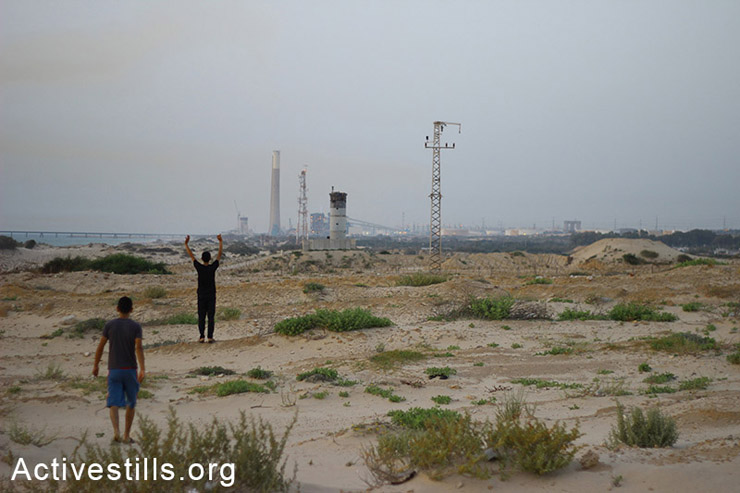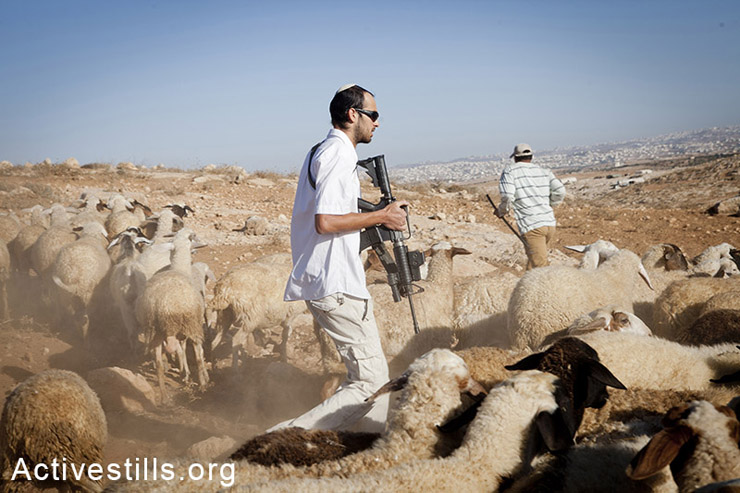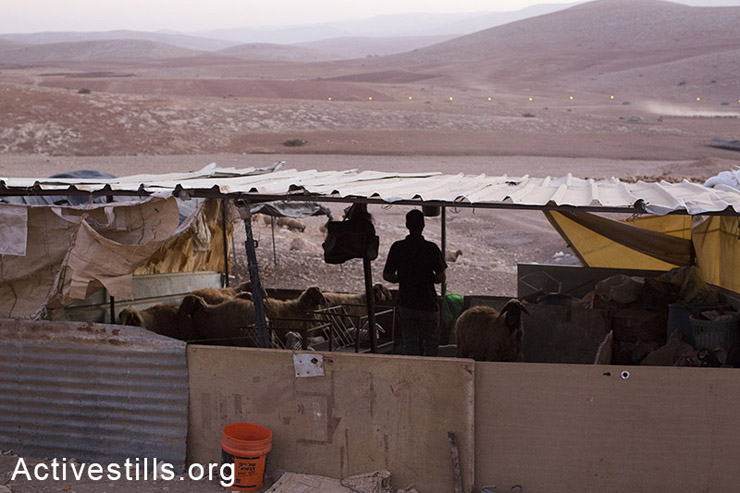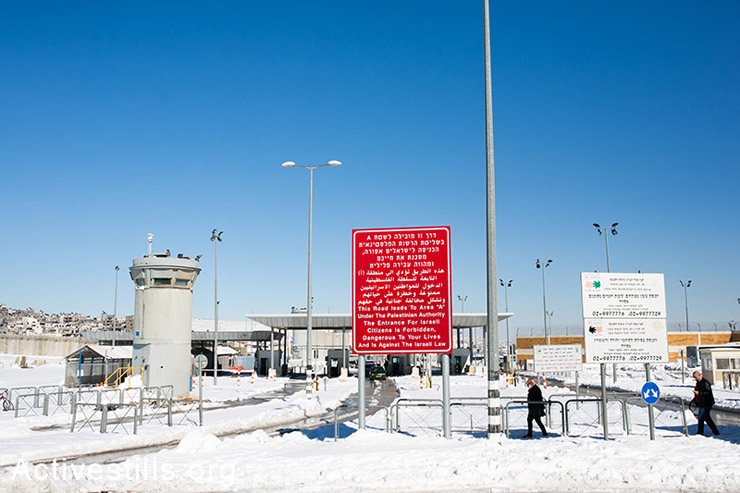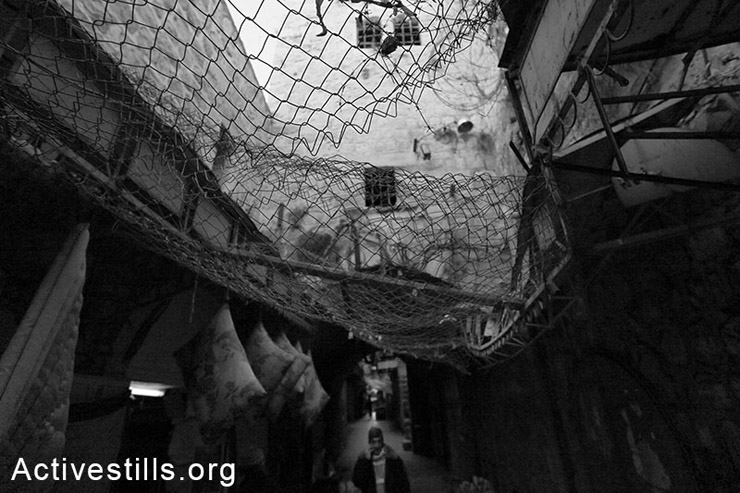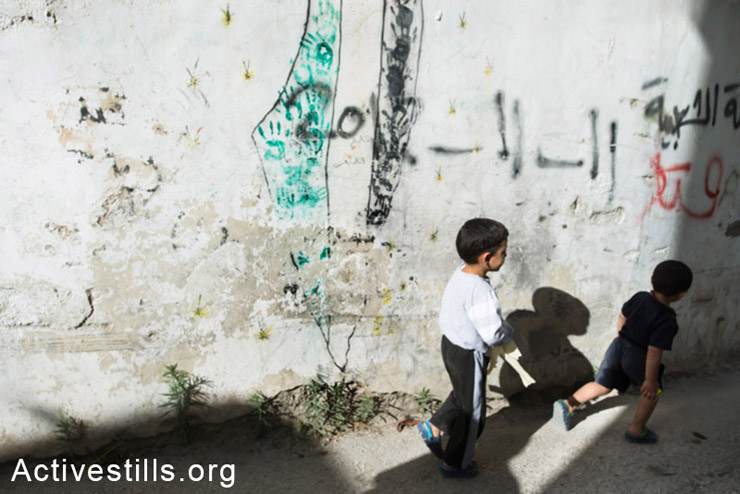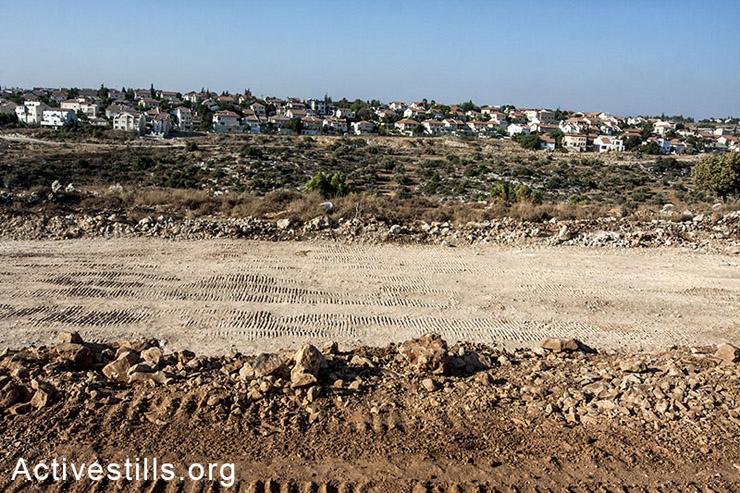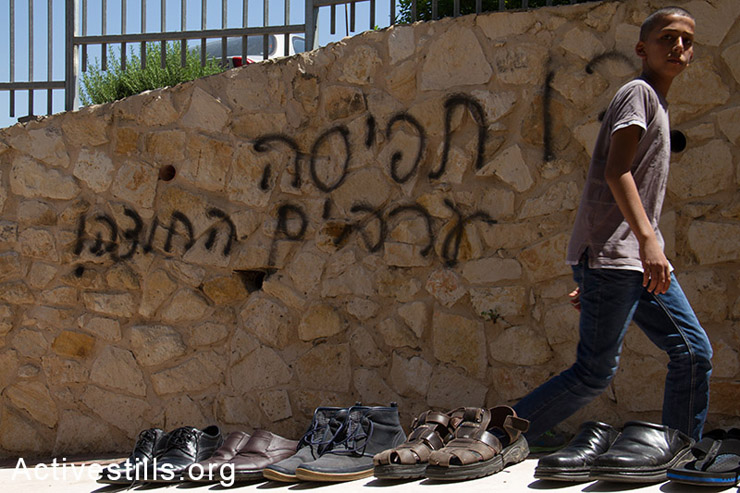Marking 47 years of the Israeli occupation since 1967, we asked Activestills photographers to choose one photograph from their archive and write about it.
Oren Ziv
Going every week to the protests in West Bank village of Bil’in, I knew most of the people who were attending the demonstrations. One of them was Bassem Abu Rahme, also known as “Fill.” At every protest he would go to the front and try to talk to the soldiers in Hebrew. On the day I took his photo, some of the protesters managed to cross the first gate of the separation barrier and march between the sections of the fence. Fill was running with a kite that was given to him by an Israel activist, a friend of mine, Yuval. He was running with it as the Israeli soldiers watched him from the other side of the wall.
About a year later, on Aprile 17, 2009, an Israeli solider shot a tear gas canister directly at Fill. He was badly injured and later died on the way to the hospital. After coming back from the morgue in Ramallah, I was looking for archive photos of him and I found this one. I gave this portrait to his family.
Basel Yazouri
The power plant of Ashdod appears clearly, seen from the ‘buffer zone’ (also known as the ‘no-go zone’) on the Palestinian side of the border in northern Gaza. The Israeli forces located in these watchtowers are known for shooting toward Palestinians who enter the “no-go zone,” whether children, women or men. Many have been killed or injured over the years by bullets shot from these towers. Two young men led me to the barbed-wire fence; I was encouraged to go even closer. Seconds later a military jeep started to fire warning shots, then tear gas was fired and the Israeli soldier shouted at us to clear the area.
Shiraz Grinbaum
This photo was taken in the south Hebron hills near the village of Gwawis in September 2012. It was an early morning and I had joined Ta’ayush activists to accompany Palestinian shepherds and their flock. As happens all too often, it wasn’t long before Israeli settlers came to harass and attack the Palestinian shepherds. This settler was coming down from the mountain, shooting in the air with his M16 rifle issued to him by the Israeli army as part of his paid job as a security coordinator of the illegal settlement of Mitzpe Yair. The law states that he is not allowed to take any actions outside the settlement and its immediate surroundings, but he did. The quiet flock was scattered in all directions and the shepherds, the flock and the activists were forced to evacuate the area for their own safety.
For me, the violence captured in this frame refers to a whole range of violence inflicted every minute for so many years on the Palestinian people, nature and land. Not fighting or stopping the violent actions of the so-called “extreme settlers,” is just one example of the Israeli terrorizing control over the Palestinian people.
Keren Manor
A Palestinian farmer looks toward the horizon of a beautiful landscape in the Jordan Valley. His farm and house were demolished twice by the Israeli authorities, as was the rest of his village. He decided to stay, to fight against the continuing attempts to uproot him. He fights using his very existence as a tool. This is the story of Burhan Basharat from Khirbet Makhoul in the Jordan Valley. This is also the story of many others.
Mareike Lauken
Evening falls on Road 60. A father and his son are on the way to their relatives to bring them two of their sheep, maybe for a celebration the next day. While crossing the main road that splits the village into two, where the army placed large roadblocks on both sides, they are stopped by soldiers at a “flying checkpoint” and held for 20 minutes.
I don’t know if the story its true. If its true that they are father and son, the purpose of their walk with the sheep, or if they are going to be late no, after being stopped for an ID check. But it is true that there is suddenly a checkpoint, one that was not been there a minute before, and one that will not be there a half an hour later.
Yotam Ronen
I choose a photo that shows Qalandiya checkpoint on a snowy day. This frame would look quiet ordinary on any other day — a “standard” view at a checkpoint. I have passed through Qalandiya many time before and I never bothered to stop and take a picture of this structure — not unless there were riots going on. This frame symbolizes for me how banal the occupation has become, at least from my point of view as a photographer. It has become so normal that I need a “gimmick” — like a snowy day — in order to make such a terrible place like the Qalandiya checkpoint to something that is worth a picture.
Ahmad Al-Bazz
The Dome of the Rock as it appears from the Western part of Jerusalem’s Old City, May 30, 2011. On June 5, 1967, the second round of Israeli occupation began. This time in West Bank, East Jerusalem, Gaza, the Golan Heights and Sinai. Israel continued the Nakba by creating settlements and expelling Palestinians, especially in Jerusalem. Israel calls it the “reunification of Jerusalem,” not occupation. But wait, who divided it in 1948?
Nowadays, millions of Muslims around the world cannot visit the third-most important religious place for Islam. Palestinians in West Bank need to wait until they are 45 years of age to get a special permit to pray there. Palestinians in Gaza cannot reach Jerusalem at all. The Israeli process of changing the identity of the city is continuing, and the world is still silent. According to the international law, East Jerusalem is an occupied area. But it seems like the world has not and will not be able to stop Israel. Palestinians need to organize themselves again and resist. This is what Palestinians should conclude after 66 years under a colonial system.
Mustafa Bader
After the Six-Day War, the eyes of some Israeli groups turned on the old city of Al-Khalil (Arabic for Hebron). The Jewish settlement there quickly started to eat away the city and the areas around it, like a worm — day in and day out. Just like in Jerusalem, the city of Hebron has been divided into two different worlds: the few Jewish settlers are above, and beneath them… us. I call it the other world underneath.
Ryan Rodrick Beiler
Children run though the streets of Aida Refugee Camp past a faded mural of historic Palestine, West Bank, June 2, 2014.
Since the collapse of U.S.-sponsored negotiations, there is a more and more obvious answer to the perennial hand-wringing headlines asking: “Is the two-state solution dead?” and “Is Israel an apartheid state?” Of course, the children in this photo knew the answers to these questions better than the U.S. interlocutors, if their anonymous comments are to be believed. With each passing year, each settlement unit, each Palestinian home demolition, 1967 becomes less relevant, and 1948 takes center stage.
Of course, for the refugees in Aida Refugee Camp and elsewhere, it was always about ‘48. The maps spray-painted on the walls in Aida Camp match those printed by the Israeli tourism ministry in that there is no Green Line. The wall that towers over Aida Camp was not built on any internationally recognized border. The Israeli forces that invade in the middle of the night to arrest their brothers and fathers do not respect the autonomy of “Area A” — or rather, their coordination with the Palestinian Authority renders it a toothless proxy force. Meanwhile, demolition and displacement of Palestinian communities inside the ’48 borders reveal that Israeli apartheid is not limited to the occupied territories. The Palestinian freedom struggle isn’t just about the occupation of ‘67. It’s about Zionism as practiced by the State of Israel since 1948.
Shachaf Polakow
This photograph was taken in Nilin 2009, during the construction of the separation wall. When you stand at the top of the hills of Nil’in you can see its old lands: the land that was stolen in 1948 near Lydda, the land that was stolen during the construction of separation wall, and the land on which the Jewish settlement of Hashmonaim was built during the early Oslo years. The occupation for me, and as can be seen through this specific landscape, is about the displacement of the Palestinian people and the ongoing attempts by Israel to push them out from consciousness of the Israeli/Jewish people that live here. This movements/acts of separation never stop, and almost every day a Palestinian family lose its home. This is the occupation as I see it.
Anne Paq
I took this picture only a few months after I arrived in Palestine, in 2003. It is still for me one of my strongest and I always go back to it. I think it is because this “David versus Goliath” photo for me embodies the essence of the occupation and lays down in a very striking and visual manner the disparity of powers in place.
That day at the Qalandiya checkpoint, which at that time was much smaller than it is now, was totally closed. Many Palestinians were upset because they could not go back to their homes in Jerusalem. The tension was palpable. The Israeli soldiers were shouting at everyone. I noticed a Palestinian kid who was trying his luck to bypass the soldiers, until he faced a huge soldier who raised his hand and eyes toward him as he was about to hit him. It was that moment I caught on camera. For me this frame says everything about the system of domination, the humiliation, the environment in which the Palestinian children grow up, the control of every aspects of life, and the violence inherent to the system of the occupation.
Omar Sammer
This photo was taken after the Mosque in Umm al-Fahm was burned by a group of Israelis who also sprayed hate-graffiti over the building. It was a very difficult day for the residents of the city. Many people came to prayers following the event, and there was not enough space for all the men’s shoes inside, so they were put near the wall outside, just underneath the graffiti that called for my people’s — any my own — expulsion from their own homes. There is, of course, a direct link between price tags attacks inside Israel and in the West Bank. They all reflect a strong wish of some Israeli Jews for the disappearance of the Palestinian people from this land. But we are here. I was born in Umm al-Fahm, and I want peace.



